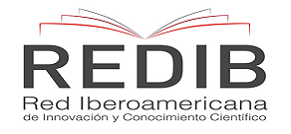Nursing care in adult patients with extracorporeal membrane oxygenation (ECMO). Systematic review
Keywords:
ECMO; Nurse; Nursing care; Nursing care plan.Abstract
Objectives: The main objective of this article was to review the literature about the specific nursing care to adult patients with ECMO, identifying the existence of standardized care plans that optimize the quality of the care and favor the continuity of the care.
Methods: A search was carried out in the following databases: CINAHL, CUIDEN PLUS, EMBASE, LILACS, MEDLINE, PUBMED. All reference lists were imported to a bibliographic manager (RefWorks), a tool used to eliminate duplicate documents. The inclusion criteria were: (1) original scientific article, (2) full text published in Spanish or English. The exclusion criteria were: (1) articles published in other languages, (2) articles in which the interventions performed on patients did not involve nursing participation.
Findings: A review of 11 articles was carried out, analyzing the role of nurses and the care of patients with ECMO. It is important to highlight the importance of prior technical training and the thorough evaluation of all physiological systems and the ECMO circuit, without forgetting family support.
Conclusions: The nurse must provide direct care to the patient with ECMO and to the circuit, carefully review all physiological systems and pay attention to the family members’ care. Therefore, the nurse acquires a primary role in the coordination of care and in the monitoring of the patient with ECMO.
Downloads
References
Berryman S. Extracorporeal membrane oxygenation in a Scottish intensive care unit. Nurs. Crit. Care. 2010;15(5):262-268. https://doi.org/10.1111/j.1478-5153.2010.00419.x
Dang D, Johantgen M, Pronovost P, Jenckes M, Bass E. Postoperative complications: Does intensive care unit staff nursing make a difference? Heart Lung. 2002;31(3):219-228. https://doi.org/10.1067/mhl.2002.122838
Dalton HJ. Extracorporeal life support: moving at the speed of light. Respiratory Care. 2011;56(9):1445-1456. https://doi.org/10.4187/respcare.01369
Freeman R, Nault C, Mowry J, Baldridge P. Expanded resources through utilization of a primary care giver extracorporeal membrane oxygenation model. Crit Care Nurs Q. 2012;35(1):39-49. https://doi.org/10.1097/CNQ.0b013e31823b1fa1
Honey M, Wang W. New Zealand nurses perceptions of caring for patients with influenza A (H1N1). Nurs Crit Care. 2013;18(2):63-69. https://doi.org/10.1111/j.1478-5153.2012.00520.x
Flörchinger B, Philipp A, Klose A, Hilker M, Kobuch R, Rupprecht L, et al. Pumpless extracorporeal lung assist: a 10-year institutional experience. Ann Thorac Surg. 2008;86(2):410-417. https://doi.org/10.1016/j.athoracsur.2008.04.045
Sánchez Luna M, Valls i Soler A, Moreno Hernando J. Oxigenación por membrana extracorpórea (ECMO). Indicaciones y guía para el contacto con una unidad de ECMO. Anales de Pediatría. 2002;57(1):51-54. https://doi.org/10.1016/S1695-4033(02)77892-2
Pertierra Cortada A, Moreno Hernando J, Mayol Gómez J, Castañón García-Alix M, Agut Quijano T. Oxigenación por membrana extracorpórea neonatal: 9 años de experiencia. Cir Pediatr. 2012;25:69-74.
Zwischenberger J, Lynch J. Will CESAR answer the adult ECMO debate? The Lancet. 2009;374(9698):1307-1308. https://doi.org/10.1016/S0140-6736(09)61630-5
Sihler K, Park P. Extracorporeal membrane oxygenation in the context of the 2009 H1N1 influenza A pandemic. Surgical infections. 2011;12(2):151-158. https://doi.org/10.1089/sur.2010.082
Gómez-Caro A, Badia J, Ausin P. Asistencia respiratoria extracorpórea en la insuficiencia respiratoria grave y el SDRA. Situación actual y aplicaciones clínicas. Archivos de Bronconeumología. 2010; 46(10):531-537. https://doi.org/10.1016/j.arbres.2010.05.005
Peek GJ, Mugford M, Tiruvoipati R, Wilson A, Allen E, Thalanany M, et al. Efficacy and economic assessment of conventional ventilatory support versus extracorporeal membrane oxygenation for severe adult respiratory failure (CESAR): a multicentre randomised controlled trial. The Lancet. 2009;374(9698):1351-1363. https://doi.org/10.1016/S0140-6736(09)61069-2
Courtin A, Sanchez L, Sinquet JC, Gaudard P, Eliet J, Barge F, Colson P. ARDS and ECMO, an update on critical care nursing. Open J. Nurs. 2012;2(03):301-306. http://dx.doi.org/10.4236/ojn.2012.223044
MacLaren G, Combes A, Bartlett RH. Contemporary extracorporeal membrane oxygenation for adult respiratory failure: life support in the new era. Intensive Care Med. 2012;38(2):210-220. https://doi.org/10.1007/s00134-011-2439-2
Rodríguez A, Martin-Loeches I, Bonastre J, Olaechea P, Álvarez-Lerma F, Zaragoza R, et al. First influenza season after the 2009 pandemic influenza: report of the first 300 ICU admissions in Spain. Medicina intensiva. 2011;35(4):208-216. https://doi.org/10.1016/j.medin.2011.03.001
Bonastre J, Suberviola B, Pozo JC, Guerrero JE, Torres A, Rodríguez A, et al. Uso de oxigenador de membrana extracorpóreo en pacientes con insuficiencia respiratoria aguda grave refractaria en la epidemia de gripe estacional 2010-2011 por influenza A (H1N1) en España. Med Intensiva. 2012;36(3):193-199. https://doi.org/10.1016/j.medin.2011.12.004
Kulkarni T, Sharma NS, Diaz-Guzman E. Extracorporeal membrane oxygenation in adults: A practical guide for internists. Cleve Clin J Med. 2016;83(5):373-384.
Torregrosa S, Fuset MP, Castelló A, Mata D, Heredia T, Bel A et al. Oxigenación de membrana extracorpórea para soporte cardíaco o respiratorio adultos. Cirugía Cardiovascular.2009;16(2):163-177. https://doi.org/10.1016/S1134-0096(09)70162-7
Allen S e, Holena D, McCunn M, Kohl B, Sarani B. A review of the fundamental principles and evidence base in the use of extracorporeal membrane oxygenation (ECMO) in critically ill adult patients. J Intensive Care Med. 2011;26(1):13-26. https://doi.org/10.1177/0885066610384061
Chillcot S, Stahovich, M, Earnhardt C, Dembitsky W. Portable rapid response extracorporeal life support a center's 20-year experience with a registered nurse-run program. Crit Care Nurs Q. 2008;31(3):211-215. https://doi.org/10.1097/01.CNQ.0000325045.17023.d1
Laird P, Ruppert SD. Acute respiratory distress syndrome - a case study. Crit Care Nurs Q. 2011;34(2):165-174.
Gay SE, Ankney N, Cochran JB, Highland KB. Critical care challenges in the adult ECMO patient. Dimensions of Critical Care Nursing. 2005;24(4):157-162. https://doi.org/10.1097/00003465-200507000-00001
Merino-Trujillo A. Como escribir documentos científicos (Parte 3). Artículo de revisión. Salud en Tabasco. 2011;17(1-2), 36-40.
Urrutia G, Bonfill X. Declaración PRISMA: una propuesta para mejorar la publicación de revisiones sistemáticas y metaánalisis. Medicina Clínica. 2010;135(11):507-511.
Moreno F, Pérez MT, Poza A. ECMO: un caso clínico. Enfermería en Cardiología. 2012;55:91-93.
Short BL. ECMO Specialist Training Manual. Ann Arbor: ELSO; 2010.
V Brogan T, Lequier L, Lorusso R, MacLaren G, Peek G. Extracorporeal Life Support: The ELSO Red Book. Ann Arbor: ELSO; 2017.
Bibro C, Lasich C, Rickman F, Foley NE, Kunugiyama SK, Moor E, et al. Critically ill patients with H1N1 influenza A undergoing extracorporeal membrane oxygenation. Crit Care Nurse. 2011;31(5):e8-e24. https://doi.org/10.4037/ccn2011186
Downloads
Published
How to Cite
Issue
Section
License
Copyright and Licensing
For all articles published in Atena Journals, copyright is retained by the authors. Articles are licensed under an open access Creative Commons CC BY 4.0 license, meaning that anyone may download and read the paper for free. In addition, the article may be reused and quoted provided that the original published version is cited. These conditions allow for maximum use and exposure of the work, while ensuring that the authors receive proper credit.
Reproducing Published Material from other Publishers
It is absolutely essential that authors obtain permission to reproduce any published material (figures, schemes, tables or any extract of a text) which does not fall into the public domain, or for which they do not hold the copyright. Permission should be requested by the authors from the copyrightholder (usually the Publisher, please refer to the imprint of the individual publications to identify the copyrightholder).
Permission is required for:
- Your own works published by other Publishers and for which you did not retain copyright.
- Substantial extracts from anyones' works or a series of works.
- Use of Tables, Graphs, Charts, Schemes and Artworks if they are unaltered or slightly modified.
- Photographs for which you do not hold copyright.
Permission is not required for:
- Reconstruction of your own table with data already published elsewhere. Please notice that in this case you must cite the source of the data in the form of either "Data from..." or "Adapted from...".
- Reasonably short quotes are considered fair use and therefore do not require permission.
- Graphs, Charts, Schemes and Artworks that are completely redrawn by the authors and significantly changed beyond recognition do not require permission.
Obtaining Permission
In order to avoid unnecessary delays in the publication process, you should start obtaining permissions as early as possible. If in any doubt about the copyright, apply for permission. Atena Journals cannot publish material from other publications without permission.
The copyright holder may give you instructions on the form of acknowledgement to be followed; otherwise follow the style: "Reproduced with permission from [author], [book/journal title]; published by [publisher], [year].' at the end of the caption of the Table, Figure or Scheme.














